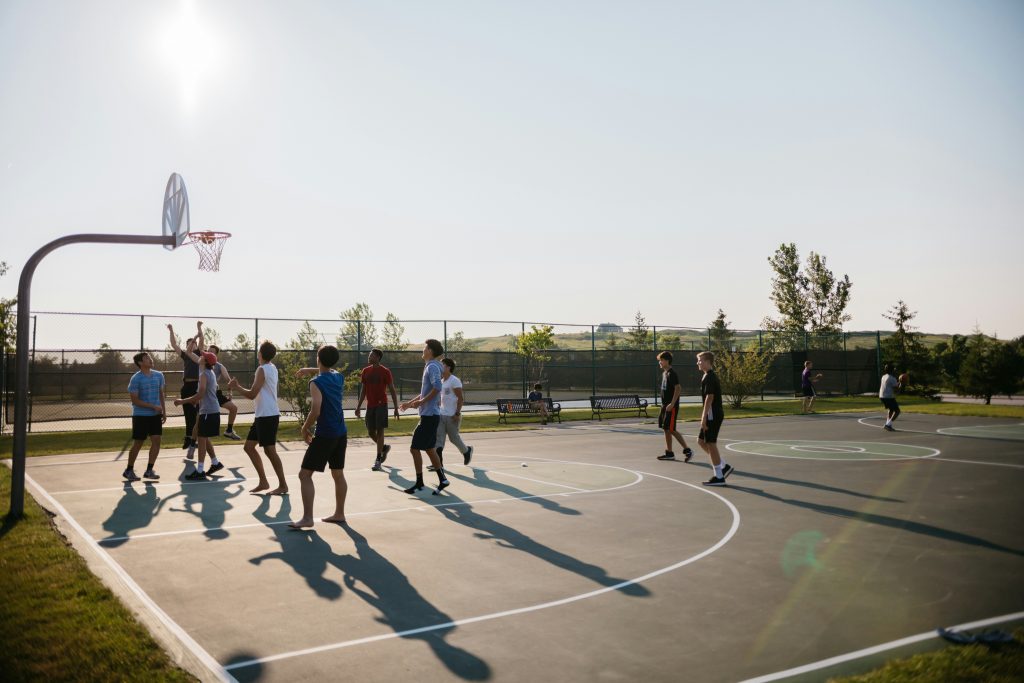
Suicide is a serious public health issue which has devastating impacts on families, friends and communities. Each year, 720,000 people die by suicide worldwide (World Health Organization, 2024). Suicide is the third leading cause of death in 15-29-year-olds, although estimates vary by country (World Health Organization, 2024). Rates of suicide are particularly high among males and in young people who experience discrimination and marginalisation including refugees, First Nations people, incarcerated youth, and individuals from the LGBTQIA+ community (World Health Organization, 2024).
Yet suicide is also preventable. Developing evidence-informed prevention and early intervention strategies is key to reducing the number of lives lost to suicide.
Welty and colleagues (2024) highlight that current preventive interventions for suicide among adolescents tend to focus on individual risk factors (e.g., depression) which can fail to support adolescents who present as low-to-moderate risk, but are actually at a higher risk of suicide. They also note that existing approaches are often expensive and have limited evidence and effectiveness in reducing suicide deaths. They suggest that an approach that targets community-level protective factors, especially a sense of connection to others, and takes a socio-ecological approach (i.e., connections between individuals but also connection within wider systems such as family, school and community) is an important, yet under-researched area in adolescent suicide prevention.
To this end, Welty and colleagues (2024) focussed their systematic review on “school connectedness” as a potentially modifiable protective factor for suicidality (i.e., thoughts, plans, attempts). School connectedness refers to thoughts, feelings and behaviours associated with connection to the school environment (e.g., students feeling a sense of belonging at school), relationships within the school (e.g., students feeling that teachers care about them) and learning experiences (e.g., student enjoying participating in learning tasks; Hodges et al., 2018; García-Moya et al. 2019). Evidence shows that school connectedness is associated with better wellbeing, mental health, physical and sexual health, and educational outcomes, and that it may help protect adolescents against depression and anxiety (Aldridge & McChesney, 2018; Raniti et al., 2022; Rose et al., 2024; Wang & Degol, 2016).
In their systematic review, Welty and colleagues (2024) examined whether school connectedness protects against suicidality in high school students and if so, whether this relationship is modified by any of the following known risk factors for suicide in adolescents: depression, anxiety, impulsivity, sleep, non-vaped substance use, vaping, gender, ethnicity, or age.

Could a feeling of connection with school reduce or prevent suicide in adolescents?
Methods
The authors searched the PubMed, EMBASE, CINAHL, PsycINFO online databases in December 2021 for observational (i.e., cohort; case control; cross-sectional) and experimental studies examining the effect of school connectedness (i.e., exposure) on at least one aspect suicidality (i.e., outcome) in high school students. Studies needed to be published in English and measure at least one aspect of school connectedness (i.e., social affiliations; school belonging; attitude about school importance; supportive learning environment). There were no restrictions by publication date.
Standard procedures for conducting a systematic review were followed (e.g., screening of at least 50% of articles by two reviewers; extracting data using predetermined categories). Included studies were assessed for risk of bias using the Newcastle-Ottawa Scale (NOS) for nonrandomized studies. Results were presented using narrative synthesis.
Results
Study characteristics
Of the 871 articles that were identified, 34 met the inclusion criteria. Twenty-seven studies were cross-sectional and seven were longitudinal. There were no experimental/intervention studies. Most studies assessed suicidal ideation (30 studies), followed by plans (2 studies), and attempts (22 studies). Twenty studies assessed suicidality within the past year and only five studies assessed lifetime suicidality. The majority of studies were published in high-income countries, primarily the United States of America.
The quality of the included studies was mixed. While 14 were rated as “high” quality (representing a low risk of bias), 20 were considered to have a “high” risk of bias (none were rated as “very high” risk). The authors noted that higher risk of bias was frequently associated with studies using self-report outcomes and not justifying sample size, for example. The review also found that studies did not control for confounders such as sleep, impulsivity, substance use, or depression in their statistical models.
Main findings
Findings relating to the effect of school connectedness on suicidality were mixed and depended on the outcome of interest:
- In studies that examined suicidal ideation as an outcome, 73% found that school connectedness protected against suicidal ideation
- In studies that examined suicide attempts as an outcome, 50% found that school connectedness protected against suicide attempts
- Of the 20 studies published within the past five years, 11 (55%) found that school connectedness was protective against suicidality
- No studies examined moderators of school connectedness and suicidality.

School connectedness was linked to less suicidal ideation in high school students.
Conclusions
This review examined the effects of school connectedness through a narrative synthesis of 34 published studies.
Overall, the authors concluded that while school connectedness can help protect against suicidality, it is more protective of suicidal ideation than suicide attempts.
To explain this finding, the authors drew on the Interpersonal Theory of Suicide, which suggests that “belongingness and burdensomeness lead to passive suicidal ideation” but “actual suicide attempts require acquired capability for suicide”. They proposed that while a lack school of connectedness is conceptually linked to a lack of belonging, it is unlikely to influence an acquired capability for suicide. This means that while school connectedness and a sense of belonging may help reduce suicidal ideation, it is less likely to influence suicide attempts.

School systems play an important role in suicide prevention for adolescents.
Strengths and limitations
There are several strengths of this review. First, by applying a holistic, socio-ecological lens to prevention and early intervention of suicidality in adolescents, the study expands upon existing evidence for individualised risk and protective factors (e.g., poor sleep) to include the influence of the wider systems in which adolescents live, learn, and grow (e.g., schools). This is important because we know that risk factors for suicide are complex and include individual risks (e.g. previous suicide attempt or experiencing a mental disorder) and those associated with wider social determinants such as exposure to adverse life events (e.g., abuse, disasters) and social or cultural disadvantage (Beautrais, 2000).
Additionally, this study took an inclusive approach to article searching by using a broad definition of school connectedness and not having restrictions by publication date. This suggests a large proportion of the available studies examining the effect of school connectedness and suicidality published in English have been captured in this systematic review.
The authors acknowledge some limitations of the evidence in this review including the observational nature of included studies, most of which were cross-sectional in design, which limits any inferences about causality (which requires prospective data). Additionally, only studies published in English were included in the review and all but one of the included studies (which was from Vietnam) was conducted in a high-income country. This limits the generalisability of the findings to low- and middle-income countries where the majority of suicides across the lifespan occur (World Health Organization, 2024).
We also note some considerations. This review included studies conducted with high school students, but the ages of included participants were not reported. “High school” corresponds to different ages worldwide, which means we cannot determine the representativeness of the findings for younger versus older adolescents. In addition, the review included seven longitudinal studies, but it is unclear whether these used retrospective or prospective data. Furthermore, no effect sizes were reported, which is important information for determining the strength of the current evidence base. Lastly, the authors acknowledge that a previous systematic review and meta-analysis was conducted on the same topic in 2017 (Marraccini and Brier, 2017). While the current review improves on some aspects of the 2017 review such as strengthening the theoretical basis and examining more covariates, it is unclear why a meta-analysis was not performed.

We need more prospective data and studies from low- and middle-income countries examining the effect of school connectedness on suicidality
Implications for practice
- The findings of this review reinforce the importance of school socio-emotional environments in supporting student wellbeing.
- If supported by prospective evidence including intervention studies, improving school connectedness has the potential to reduce suicidal ideation in adolescents.
- Given that school connectedness has been associated with mental and physical health, wellbeing, and better education outcomes in adolescents in other studies, strategies that improve school connectedness (e.g., teacher-student support including feeling that teachers are fair, empathic and supportive; Allen et al., 2018) may be a good investment for schools to address multiple student issues simultaneously. For example, an intervention to improve school connectedness might improve both mental and physical health which reduces the need to implement interventions that target mental and physical health separately.

Fostering a supportive and inclusive social-emotional environment in schools is important for student wellbeing.
Statement of interests
Dr Monika Raniti and Dr Jennifer Dam were not involved in the Welty et al. (2024) review or in any of the included studies. Both Dr Raniti and Dr Dam are supported by the Centre of Research Excellence in Driving Global Investment in Adolescent Health (NHMRC GNT1171981). Dr Monika Raniti is also supported by the ALIVE National Centre for Mental Health Research Translation (NHMRC Special Initiative in Mental Health Grant GNT2002047) and has previously received funding from the Wellcome Trust as part of their Active Ingredients for Youth Anxiety and Depression Commission (2021) to examine the role of school connectedness in youth depression and anxiety.
Links
Primary paper
Welty CW, Bingham L, Morales M, Gerald LB, Ellingson KD, & Haynes PL. (2024). School connectedness and suicide among high school youth: a systematic review. Journal of School Health. 2024;94(5):469-480. doi: 10.1111/josh.13445
Other references
Aldridge JM, McChesney K. The relationships between school climate and adolescent mental health and wellbeing: A systematic literature review. International Journal of Education Research. 2018;88:121–45.
Allen K, Kern ML, Vella-Brodrick D, Hattie J, Waters L. What schools need to know about fostering school belonging: A meta-analysis. Educational psychology review. 2018;30:1-34.
Australian Institute for Health and Welfare. (2023). Deaths by suicide among young people.
Barrass, L. (2024). Risk and recovery factors in male suicide: is society failing men? The Mental Elf, January 2024.
Beautrais, A. L. Risk factors for suicide and attempted suicide among young people. Australian & New Zealand Journal of Psychiatry. 2000;34(3):420-436.
García-Moya I, Bunn F, Jiménez-Iglesias A, Paniagua C, Brooks FM. The conceptualisation of school and teacher connectedness in adolescent research: a scoping review of literature. Educational Review. 2019;71(4):423-444.
Hodges A, Cordier R, Joosten A, Bourke-Taylor H, Speyer R. Evaluating the psychometric quality of school connectedness measures: A systematic review. PloS one. 2018;13(9):e0203373.
Lawson, K. (2024). Suicide prevention: expanding the narrative to preventing the crisis, not just treating the crisis. The Mental Elf, November 2024.
Mackay, L. (2023). Sexual minorities, suicide and self-harm: new research in England deepens our understanding. The Mental Elf, September 2023.
Marraccini ME, Brier ZM. School connectedness and suicidal thoughts and behaviors: A systematic meta-analysis. School psychology quarterly. 2017;32(1):5.
Raniti, M. & Rakesh, D. (2022). School connectedness, anxiety and depression: recent evidence and young people’s perspectives #ActiveIngredientsMH. The Mental Elf, February 2022.
Raniti M, Rakesh D, Patton GC, Sawyer SM. The role of school connectedness in the prevention of youth depression and anxiety: a systematic review with youth consultation. BMC Public Health. 2022; 25;22(1):2152.
Roberts, T. (2019). Suicide and mental illness in low- and middle-income countries. The Mental Elf, October 2019.
Rose ID, Lesesne CA, Sun J, Johns MM, Zhang X, Hertz M. The relationship of school connectedness to adolescents’ engagement in co-occurring health risks: A meta-analytic review. The Journal of School Nursing. 2024;40(1):58-73.
Suicide Prevention Australia. (2021). Fact sheet: Youth Suicide. 2021.
Wang M-T, Degol JL. School climate: A review of the construct, measurement, and impact on student outcomes. Educational Psychology Review. 2016;28(2):315–52.
World Health Organization. (2024, August 29). Suicide.




